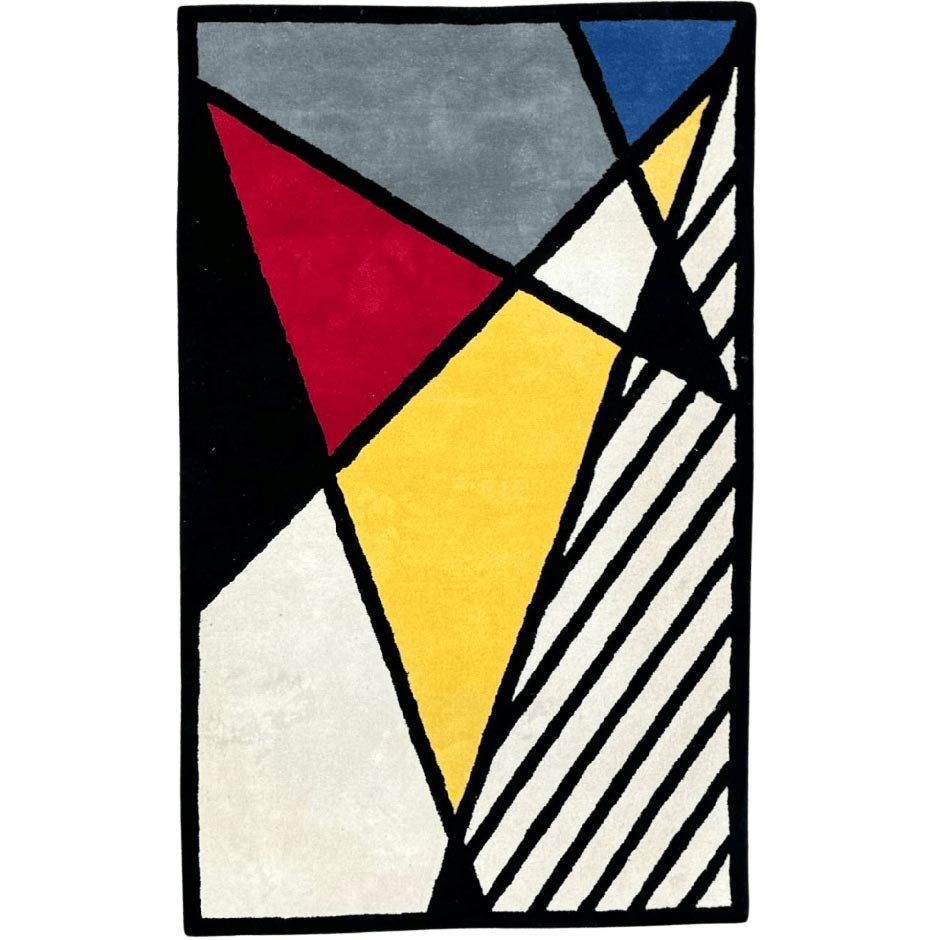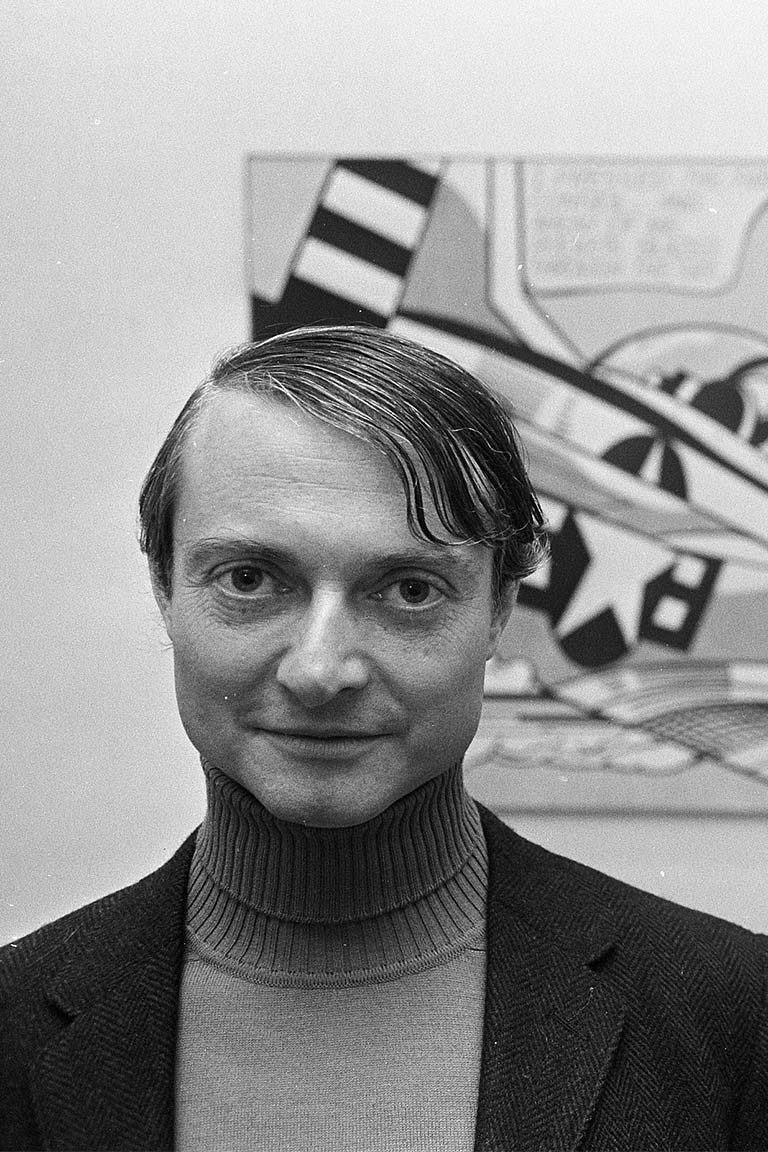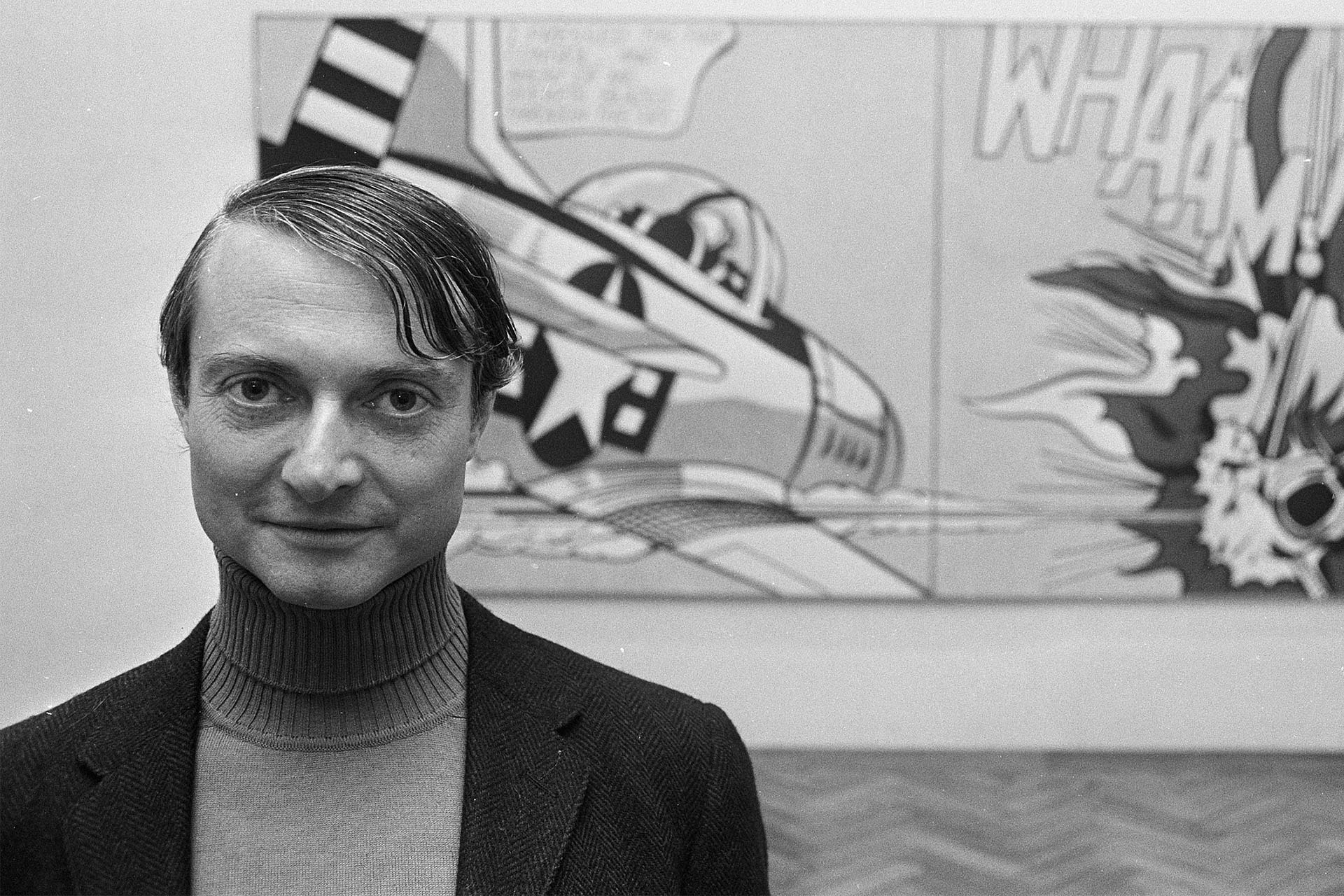Roy Lichtenstein, a central figure in the Pop Art movement, transformed the art world by merging high art with popular culture. His signature use of bold primary colors, Ben-Day dots, thick black outlines, and comic book imagery challenged traditional art conventions. To understand Lichtenstein’s impact, it’s essential to explore his life, artistic evolution, and ventures into textiles like the striking “Composition Tapestry.”
Born on October 27, 1923, in Manhattan, New York, to a Jewish middle-class family, Lichtenstein was encouraged by his mother’s cultural interests to explore art and music. He played the piano and clarinet and frequented New York City’s museums and galleries, experiences that shaped his artistic vision.
In his early career during the 1940s and 1950s, Lichtenstein explored styles such as Cubism, Expressionism, and Abstract Expressionism, often drawing from mythology and Americana. However, he struggled to define his artistic voice and gain recognition. This changed in the early 1960s as he transitioned to Pop Art, with his breakthrough piece “Look Mickey.” This was a pivotal work that adapted imagery from a Disney children’s book using Ben-Day dots and comic book aesthetics. This piece marked his break into Pop Art and inspired some of his most iconic works. His style redefined the boundaries of fine art, elevating elements of popular culture to the status of high art.
Beyond his comic-inspired paintings, Lichtenstein contributed to legitimizing popular culture as a fine art subject, reshaping ideas of originality, authorship, and artistic value. He took inspiration from the era’s consumerism, mass production, and media saturation. His works sparked enduring debates in the art world and influenced contemporary artists who draw from media, advertising, and popular culture.
Lichtenstein’s legacy lives on through institutions like the Roy Lichtenstein Foundation, which promotes the study and preservation of his art. His impact continues to resonate, bridging the gap between art and everyday life, and inspiring new generations to explore the intersection of culture and creativity.
Foray into Textiles: “Composition Tapestry”
One of the lesser-known aspects of Lichtenstein’s career was his exploration of textiles. In the 1970s, he began collaborating with weavers to produce tapestries that translated his bold, graphic style into a tactile medium. These works allowed Lichtenstein to experiment with texture and materiality while maintaining his characteristic aesthetic.
“Composition Tapestry” exemplifies Lichtenstein’s ability to adapt his style to different mediums. The piece features a dynamic interplay of geometric shapes and primary colors, creating a sense of movement and energy. The use of textiles adds a new dimension to his work, as the woven texture contrasts with the flatness of his paintings. “Composition Tapestry” highlights Lichtenstein’s interest in abstraction and his willingness to push the boundaries of his practice.


